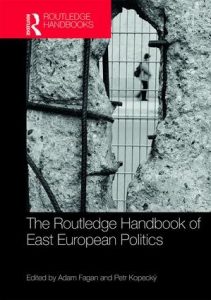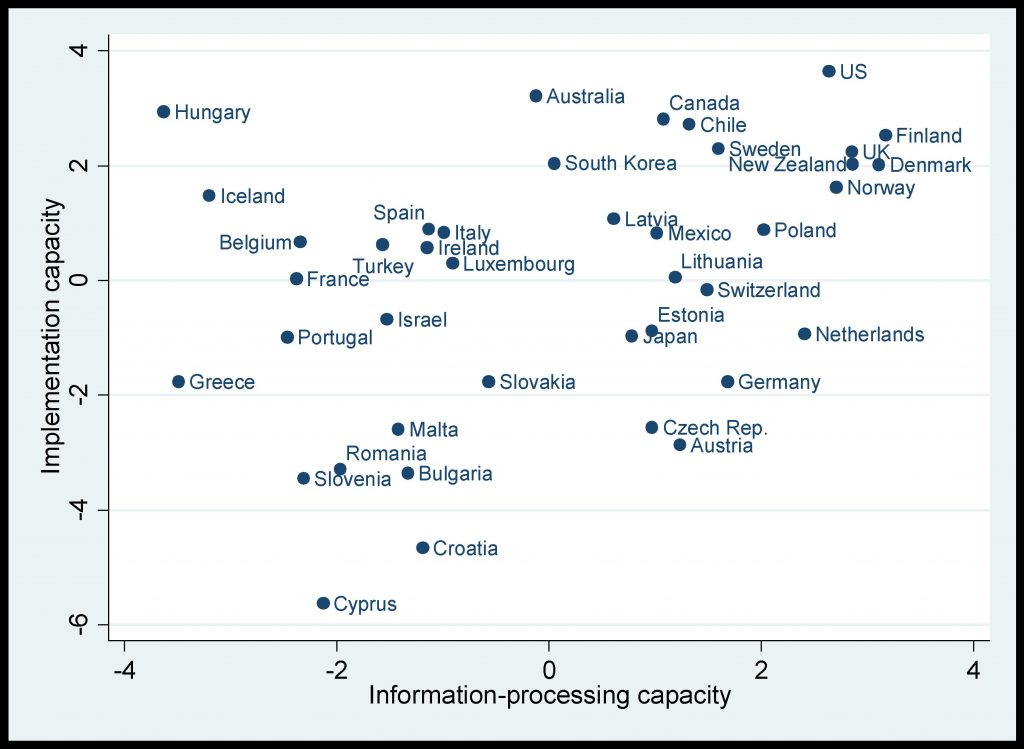Handbook of East European Politics, ed. by P. Kopecký and A. Fagan, London: Routledge
Core executives have become increasingly important political actors and arenas due to several interlinked developments affecting both states and societies. Modernisation has weakened the ties between political parties and voters, making parties more dependent on state resources and, in particular, access to government. Since the political process has become more dominated by media communication, political controversy tends to be framed between chief executives and rival political leaders. Global economic integration has narrowed the policy discretion of nation states and fostered the spread of non-majoritarian institutions entrusted with regulatory functions. These trends have been associated with the growing weight of policy output as a source of legitimacy, in contrast to “input legitimacy” derived from democratic elections. Among the three branches of state power, executives control most of the tools available to influence policy outputs and the interventions of both domestic and international regulatory agencies. The crisis and politicisation of European integration have further enhanced the salience of national (chief) executives compared to national legislatures and supranational institutions. As a result, many of the choices characterising politics and policymaking are now made or shaped at the centres of executives.
 This chapter discusses the ‘core executive’ both as an empirical field of actors, institutions, and behavioural practices at the centres of Central European governments and as a theoretical concept formulated to study this field. The term ‘core executive’ was initially proposed by Dunleavy and Rhodes (1990) to describe the centre of the British government from a functional perspective. The core executive comprises ‘all those organizations and procedures which coordinate central government policies, and act as final arbiters of conflict between different parts of the government machine’ (Rhodes, 1995, 12, Dunleavy and Rhodes, 1990). In the United Kingdom, these functions are performed by ‘the complex web of institutions, networks and practices surrounding the prime minister, cabinet, cabinet committees and their official counterparts, less formalised ministerial ‘clubs’ or meetings, bilateral negotiations and interdepartmental committees’, including the coordinating departments at the centre of government (Rhodes, 1995, 12). The notion of a core executive represents a conceptual innovation insofar as it
This chapter discusses the ‘core executive’ both as an empirical field of actors, institutions, and behavioural practices at the centres of Central European governments and as a theoretical concept formulated to study this field. The term ‘core executive’ was initially proposed by Dunleavy and Rhodes (1990) to describe the centre of the British government from a functional perspective. The core executive comprises ‘all those organizations and procedures which coordinate central government policies, and act as final arbiters of conflict between different parts of the government machine’ (Rhodes, 1995, 12, Dunleavy and Rhodes, 1990). In the United Kingdom, these functions are performed by ‘the complex web of institutions, networks and practices surrounding the prime minister, cabinet, cabinet committees and their official counterparts, less formalised ministerial ‘clubs’ or meetings, bilateral negotiations and interdepartmental committees’, including the coordinating departments at the centre of government (Rhodes, 1995, 12). The notion of a core executive represents a conceptual innovation insofar as it
(1) focuses on neutral functions rather than specific institutions like the prime minister or cabinet which may convey normative connotations and cultural bias;
(2) goes beyond a formal institutional analysis to investigate the empirical practice and resources of policy coordination, including both its political and administrative dimensions; and
(3) reflects the fragmented network of institutions that emerged from neoliberal reforms of government and substituted the traditional framework of cabinet government.
Replacing hierarchic, Weberian models of central government by market mechanisms, negotiations, and networks as modes of governance, these reforms are viewed as part of a broader ‘hollowing-out of the state’, a process that has also been driven by growing international interdependencies, the privatisation of public services and devolution (Rhodes, 1994). As a consequence, the spatial metaphor ‘core’ seems more appropriate than ‘top’, and heads or centres of government now appear to be more aptly characterised by their coordination and arbitration functions than by ‘instructing’ or ‘ordering’. The notion of political power underlying the concept of the core executive is relational and contingent (Rhodes and Tiernan, 2015, Elgie, 2011): in order to achieve their goals, prime ministers and core political actors depend on other actors and must exchange resources such as authority, expertise or money with them (Rhodes, 1997, 203).
Apart from these assumptions, the concept of the core executive initially did not bear any implications for the likely or desirable distribution of power, the prevalent modes of governance, or the roles of political actors in central government. This indeterminacy has facilitated its diffusion from the original British context to other Westminster systems as well as to continental European and even to presidential systems of government (Helms, 2005, Weller et al., 1997). However, the ‘essential malleability of the term “core executive” is [also] the reason why its use has become de rigueur. It is a wonderfully convenient term. The result, though, is that the universe of “core executive studies” includes a great deal of work that could, quite happily, use a different term and have no less analytical purchase.’(Elgie, 2011, 72)
The remainder of this chapter distinguishes two paradigms that have shaped core executive studies focusing on Central Europe and reflect the recent history of the region: transition and Europeanisation. A third paradigm of ‘executive governance’ is suggested as a perspective for future work. The main argument of the chapter is that the trend towards centralised executive authority in several Central European countries suggests complementing the analysis of institutional arrangements with a broader analysis of governance. Such an approach would relate institutions to policies and their outcomes, highlighting possible drawbacks of centralisation and trade-offs between different functions or policy objectives.

References
Dunleavy, P. and R. A. W. Rhodes (1990) ‘Core Executive Studies in Britain’, Public Administration, 68(1), pp. 3-28.
Elgie, R. (2011) ‘Core Executive Studies Two Decades On’, Public Administration, 89(1), pp. 64-77.
Helms, L. (2005) Presidents, Prime Minister and Chancellors. Executive Leadership in Western Democracies. Houndmills, Basingstoke: Palgrave Macmillan.
Rhodes, R. A. (1995) ‘From Prime Ministerial Power to Core Executive’, in Rhodes, R.A. & P. Dunleavy (eds) Prime Minister, Cabinet and Core Executive. London: Macmillan, pp. 11-37.
Rhodes, R. A. (1994) ‘The Hollowing Out of the State: The Changing Nature of the Public Service in Britain’, The Political Quarterly, 65(2), pp. 138-151.
Rhodes, R. A. (1997) ‘”Shackling the Leader?”: Coherence, Capacity and the Hollow Crown’, in Weller, P., H. Bakvis & R.A. Rhodes (eds) The Hollow Crown. Countervailing Trends in Core Executives Transforming Government. Houndsmill, Basingstoke: Macmillan, pp. 198-223.
Rhodes, R. A. and A. Tiernan (2015) ‘Executive Governance and its Puzzles’, in Massey, A. & K. Miller (eds) International Handbook of Public Administration and Governance. Chelmsford: Edward Elgar, pp. 81-103.
Weller, P., H. Bakvis and R. A. Rhodes (eds) (1997) The Hollow Crown. Countervailing Trends in Core Executives. Houndsmill, Basingstoke: Macmillan.